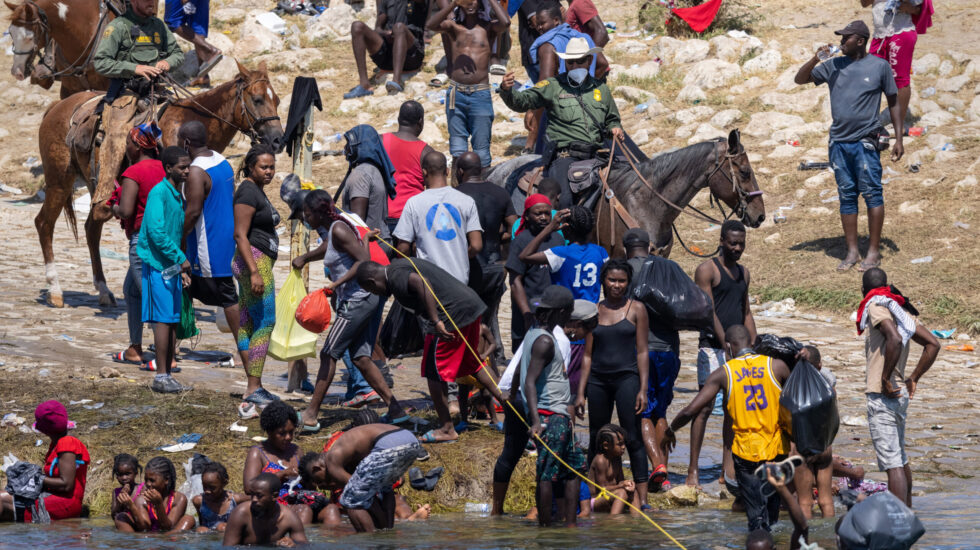A new report in the Dallas Morning News suggests that the Mexican government helped facilitate September’s mass arrival of Haitian refugees at the Texas border in an attempt to gain leverage over the U.S. as the two countries renegotiate the terms of an aid program.
The outlets reports:
“I find the timing of the big migrant flow interesting. It was the perfect storm,” said Arturo Fontes, a former FBI agent who spent his career on the border and in Mexico and is the founder of Fontes International Solutions, a security consulting firm with high-level contacts throughout Mexico. “Mexico’s way of saying, ‘We too have leverage.’ Where was the shared intelligence between both countries?”
Fontes has been critical about what he calls a “breakdown in cooperation” with U.S. law enforcement agencies under the López Obrador administration.
In September, more than 15,000 Haitian refugees setup camp underneath a bridge that links Mexico to Texas. The Dallas Morning News adds:
Smugglers used more than 200 buses, trucks, taxis and even a ferry to move Haitians in Mexico up to the Texas border. The numbers skyrocketed on days that coincided with Mexico’s biggest national holiday — Independence Day.
“Such a complex operation on a grand scale that we all saw didn’t happen by chance,” said Tonatiuh Guillén, who served as the commissioner of the Instituto Nacional de Migración, or Mexico’s immigration chief, under President Andrés Manuel López Obrador until 2019. “You’re talking 200, 250, maybe more buses. You can’t do that without having an organized structure. I don’t know whether the authorities were indifferent, just didn’t care or just looked the other way.”
“It’s hard to see how this operation happened without authorities knowing about it, or being caught off guard,” he added. “That to me is obvious.”
Ruben Figueroa, a veteran immigrants rights activist told the Morning News, “suddenly everyone is leaving, and in mass numbers. This just doesn’t happen without the complicity of government authorities.”
Refugees from Central America and the Caribbean often flow through Mexico in an attempt to reach America’s Southern border. The U.S. depends on Mexico to thwart some of that migration, but the country has struggled to keep up with a massive influx.
US Secretary of State Antony Blinken and US Secretary of Homeland Security Alejandro Mayorkas traveled to Mexico last Friday to meet with López Obrador.
“It’s time for a comprehensive new approach to our security co-operation,” Blinken said in Mexico City.
Pamela Starr, the director of the U.S.-Mexico Network at the University of Southern California, told The Financial Times, “There’s no question in my mind the Biden administration is trying to be as quiet and as diplomatic as they possibly can with López Obrador. They just don’t have the political space in the United States to lose Mexico’s co-operation on migration.”
